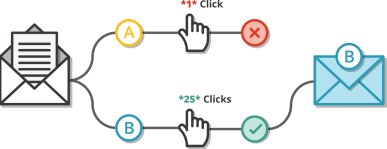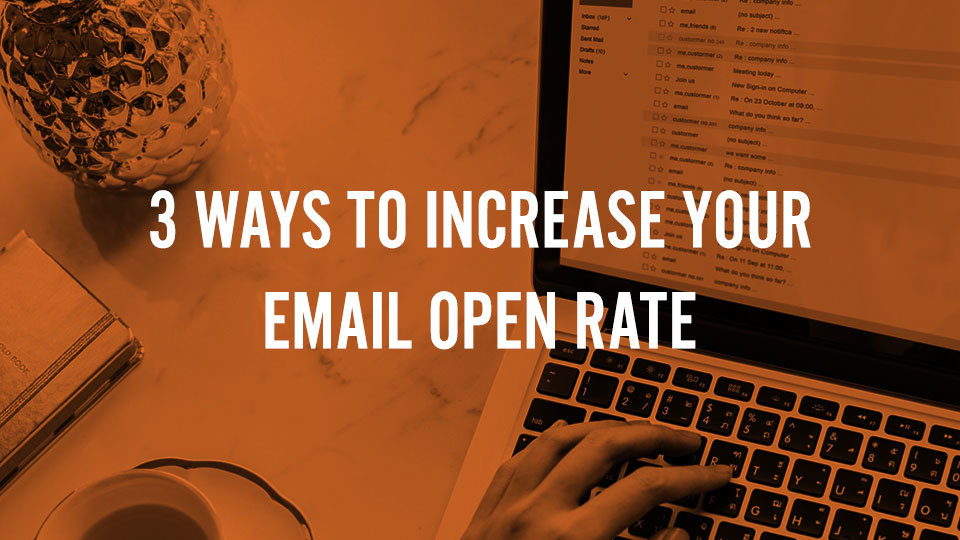3 Ways to Increase Your Email Open Rate
By The A Group
Email isn’t what it used to be. Back in the day, it was just be a sweet new way for us to communicate quicker than snail mail. And now...it’s so much more. As a nonprofit, it can be the difference between raising just enough money to pay the bills and raising enough to finally moving the needle to reach your goal of greater impact.
Your emails should play a huge role in your fundraising efforts, but it’s not a cakewalk getting someone to actually open the email itself. It requires some strategy and intentionality before firing one off.
Here are some tips that we call, the “Three S’s of Email Strategy.”
1. Subject Line
33% of recipients open an email based on the subject line alone. We know this, right? Because we (as consumers) are inundated with bad emails every day, and we know junk mail when we see it. However, when it comes to drafting our organization’s marketing emails and newsletters, it’s easy to slip into the same trap our junk mail often does.
Think about the emails that you open. Typically, they’re not the emails that seem like an infomercial at a glance. The subject lines are catchy, not gimmicky, and true. Check out some of these helpful strategies that help achieve a higher open rate:
-
Pose a question
- Have you heard?
- Can you help us reach our goal?
-
Create urgency
- Use words like “tomorrow,” “important,” or “now.”
- "Only 3 days left to ______!"
-
Use words that imply “helping” as opposed to “obligation.”
- The word “donate” has the lowest open rate amongst other frequently used words in nonprofit fundraising emails. It often feels impersonal and emotionally disconnected.
-
People are more likely to respond to messages that feel cause-related like:
- “5 ways you can help” or “You can make a difference.”
-
Say thank you
- This is an easy one to forget, but your donors like to be thanked! Sending thank you emails will keep your donors loyal and excited to continue helping your nonprofit make a difference.
Last subject line tip: try A/B testing! Send two versions of the email (only adjusting the subject line) and see if the copy communicating urgency got higher open rates than the one asking a question, or vice versa.

2. Segmentation
List segmentation is exactly as it sounds. It’s the process of dividing up your all-encompassing email list into “segments” that have similar qualities/interests.
And why is it important? Because email subscribers have limited attention spans and high expectations for emails that are lucky enough to be opened. As soon as you throw irrelevant information their way, their likeliness to continue opening your emails (including the crucial ones where you’re asking for their financial help) rapidly declines.
For example, let’s say you’re a nonprofit in Nashville. Your organization serves the homeless in a few different capacities: providing clean showers, serving food in shelters and offering transitional housing. While a potential donor likely cares about the overall goal of helping those in need, there’s likely something that they saw or gave to initially that sparked their desire to give. Knowing that data and using it to send them information that they care most about will help increase volunteer rates and dollars given.
Moral of the story:
1. Identify your audiences
2. Segment your list accordingly
3. Send unique and relevant information to each group
3. Study email send times and days
Believe it or not, there is a science to this whole email thing. And while there’s no one-size-fits-all formula, there is a pretty simple way to identify the best time and days to send your emails. Studies show that overall, emails sent on Tuesdays at 10 am get the highest open rates. However, if you want to know what fits your audiences, there are some simple steps that can help you find a send time that is most beneficial for your open rates.
You thought testing was over after college, but we’re bringing it back. :)
Try sending your emails each day of the week over a period of time. Don’t change up the time of day that you send yet, as you want to make sure you only have one testing variable at a time. Once you’ve done this, look back at the open and click-through rates of your emails. Was Wednesday the highest? If so, mark Wednesday as your day and now start sending emails at different times of day (over a period of time) and take note of the resulting optimal time. This will allow you to see when your subscribers are most attentive to your emails. Test, adjust and fine-tune.
While there are several other strategies to optimizing email open rates, the "3 S's" are helpful steps to get you started in the right direction. Now stop reading and go send yourself some emails!














